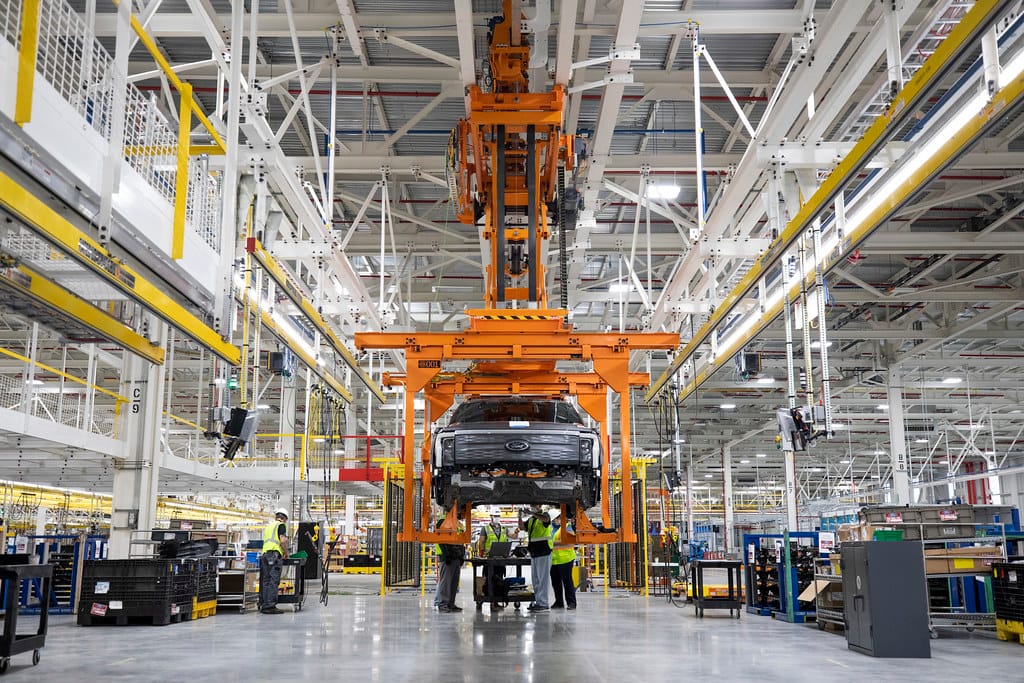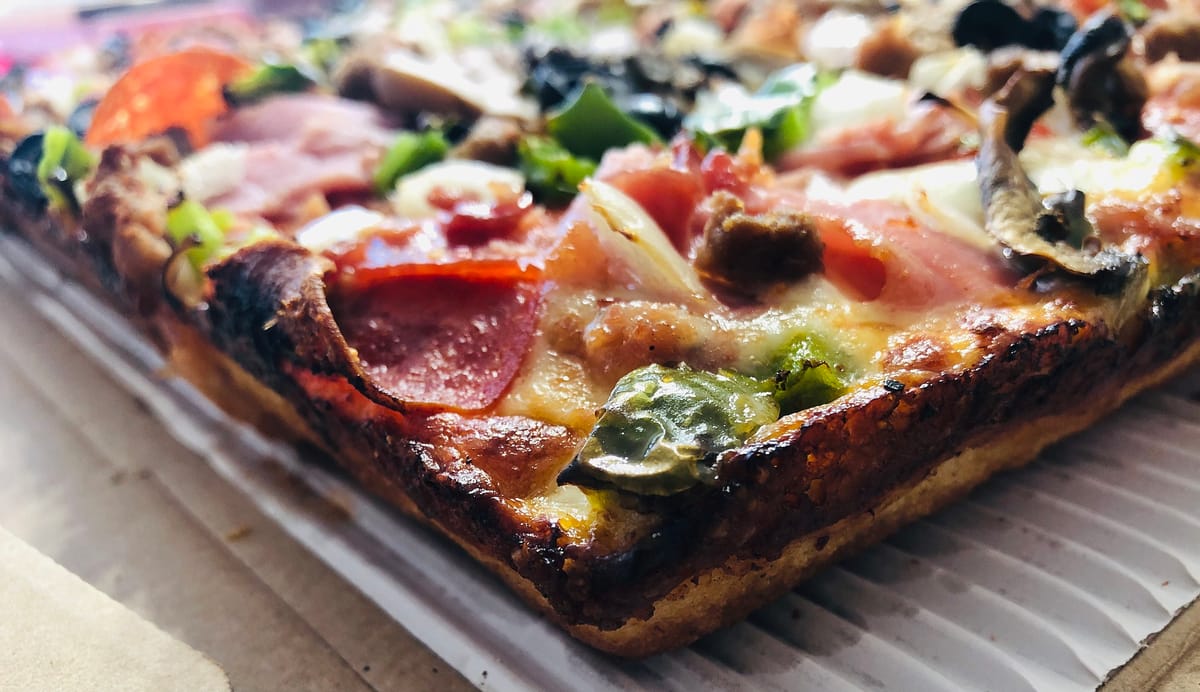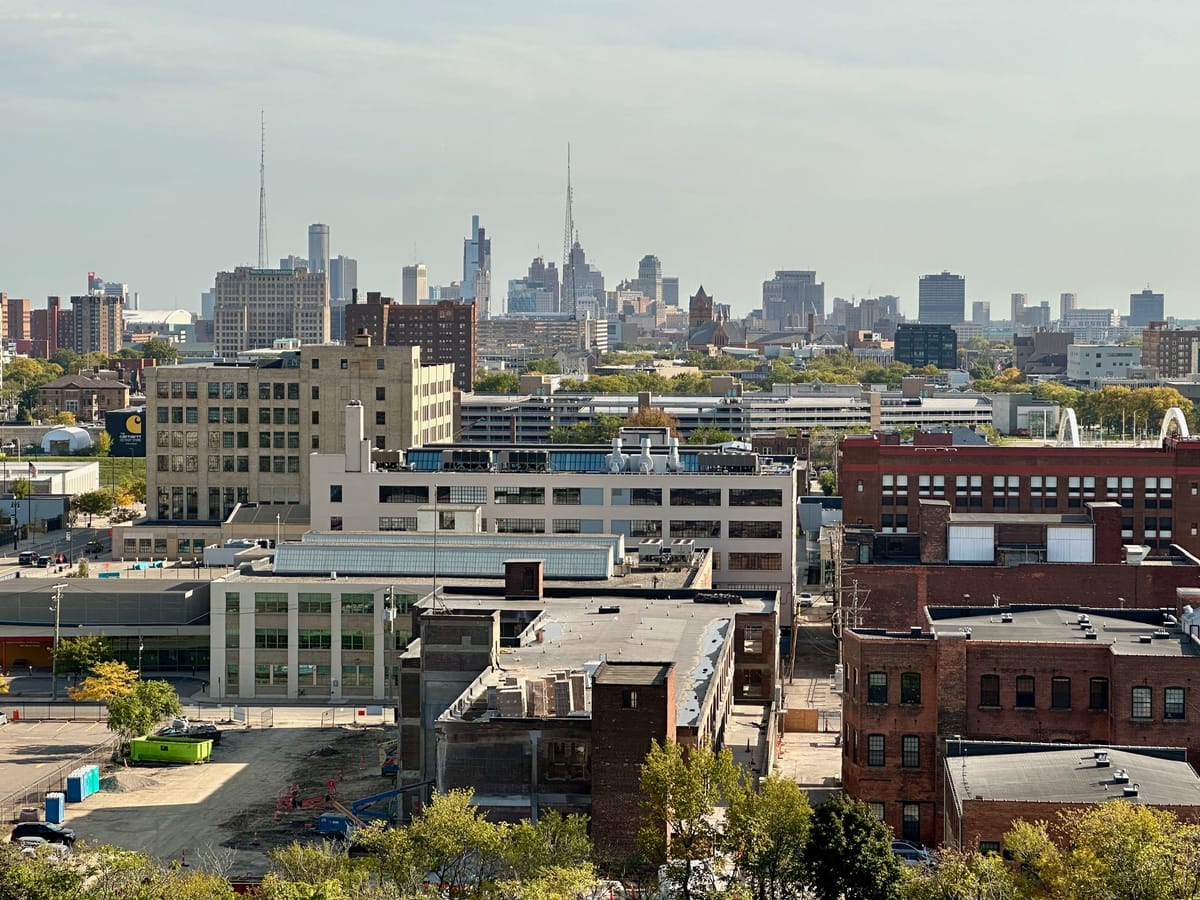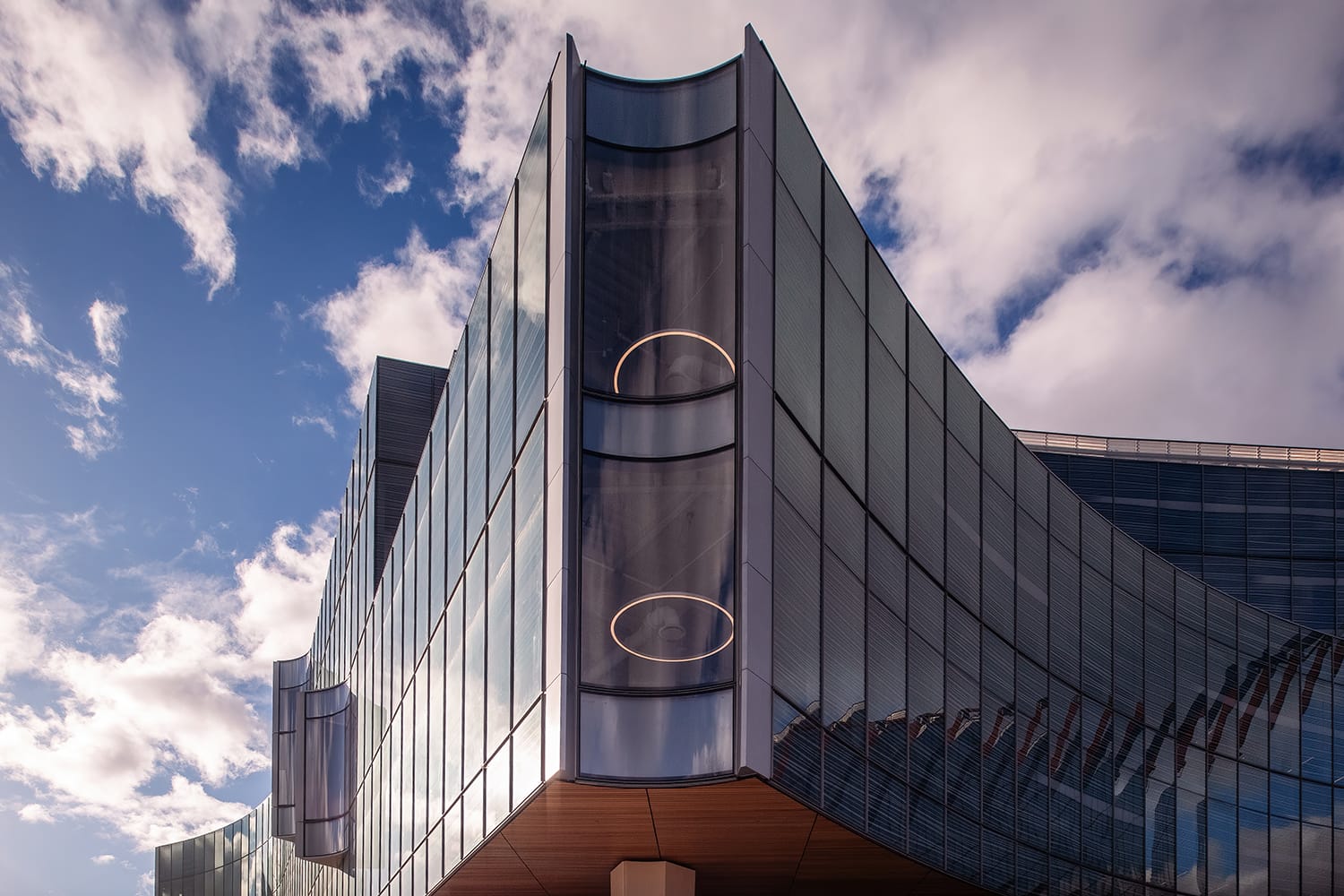Come along with me and photographer Ryan Southen for an inside look at their new glass-clad headquarters across from The Henry Ford in Dearborn.
It shows an organization that’s looking not only to the future, but to having a campus that top talent from around the country would want to work at.

A Human-Centric Campus
The first thing that struck me walking up was the human scale of it all. Far from being an intimidating sea of parking, this was almost like a park among cars.
The driveways were thoughtful, designed to move vehicles quickly but not sprawlingly wide like so many corporate campuses I’ve been on.
Ford tells me that this is part of bringing 14,000 employees within a 15 minute walk of each other, and I see that intention.
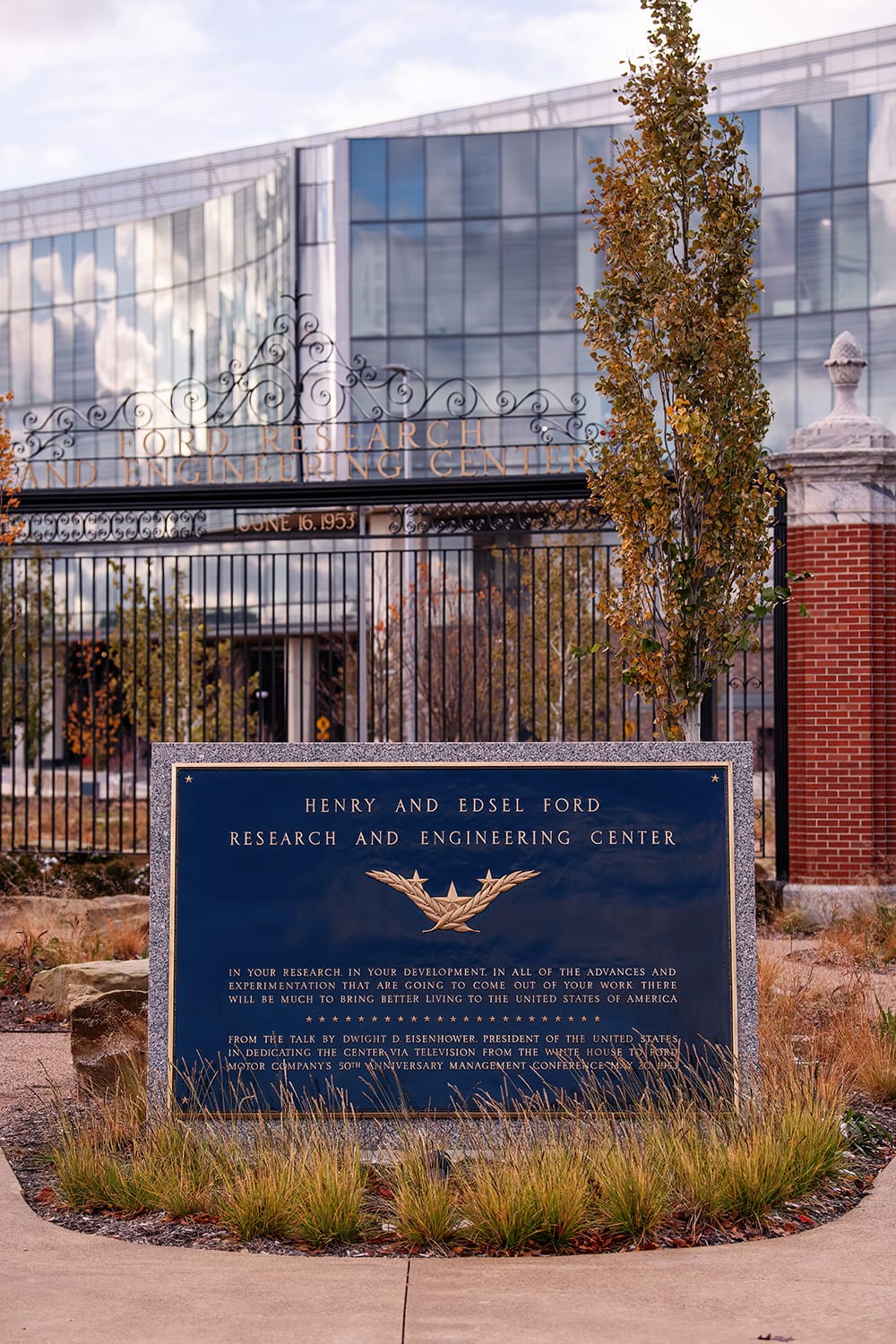
It might sound ironic for an auto company — but this new campus shows that Ford knows the world has changed.
The automobile, of course, is crucial. But instead of dominating, it fits into a mosaic of mobility.

Inside The Hub: Where Collaboration Happens
The exterior of “The Hub” contains a sweeping glass facade. Where the old headquarters three miles away on Michigan Ave. was more than a dozen stories of straight lines — this is far more interesting.
Although this new facility is four stories, it contains 2.1 million square feet and room for far more employees — up to 5,000.
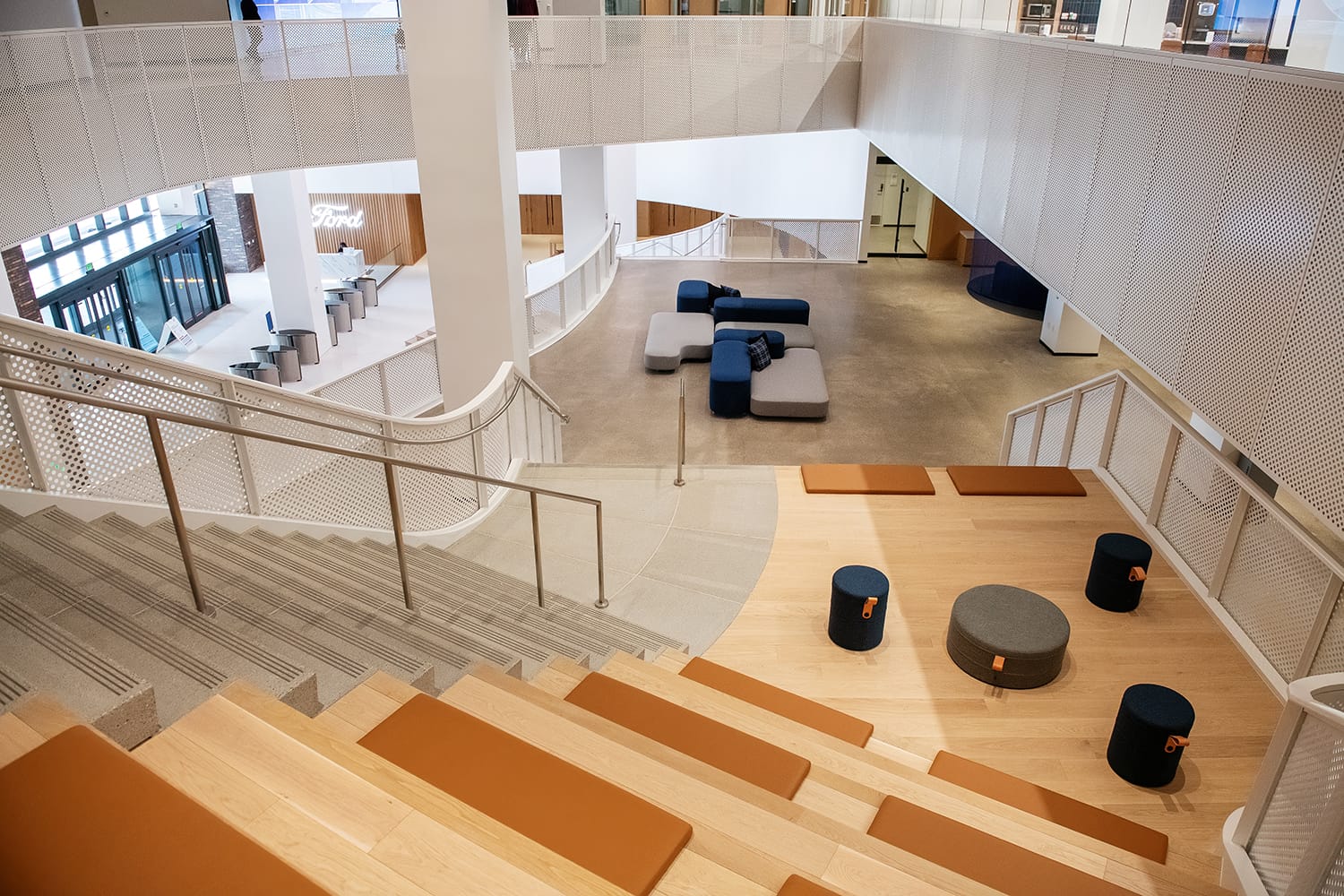
The project architect is Snøhetta — a Norway-based firm with stunning modern work located around the globe.
The contractors are Barton Malow out of Southfield, putting in four eiffel towers worth of steel.
Another neat detail is that the floors are reinforced and at least 22 inches thick; so you can drive a truck across almost the entire thing, on any floor.
That means tons of time saved when wheeling ideas to different departments.
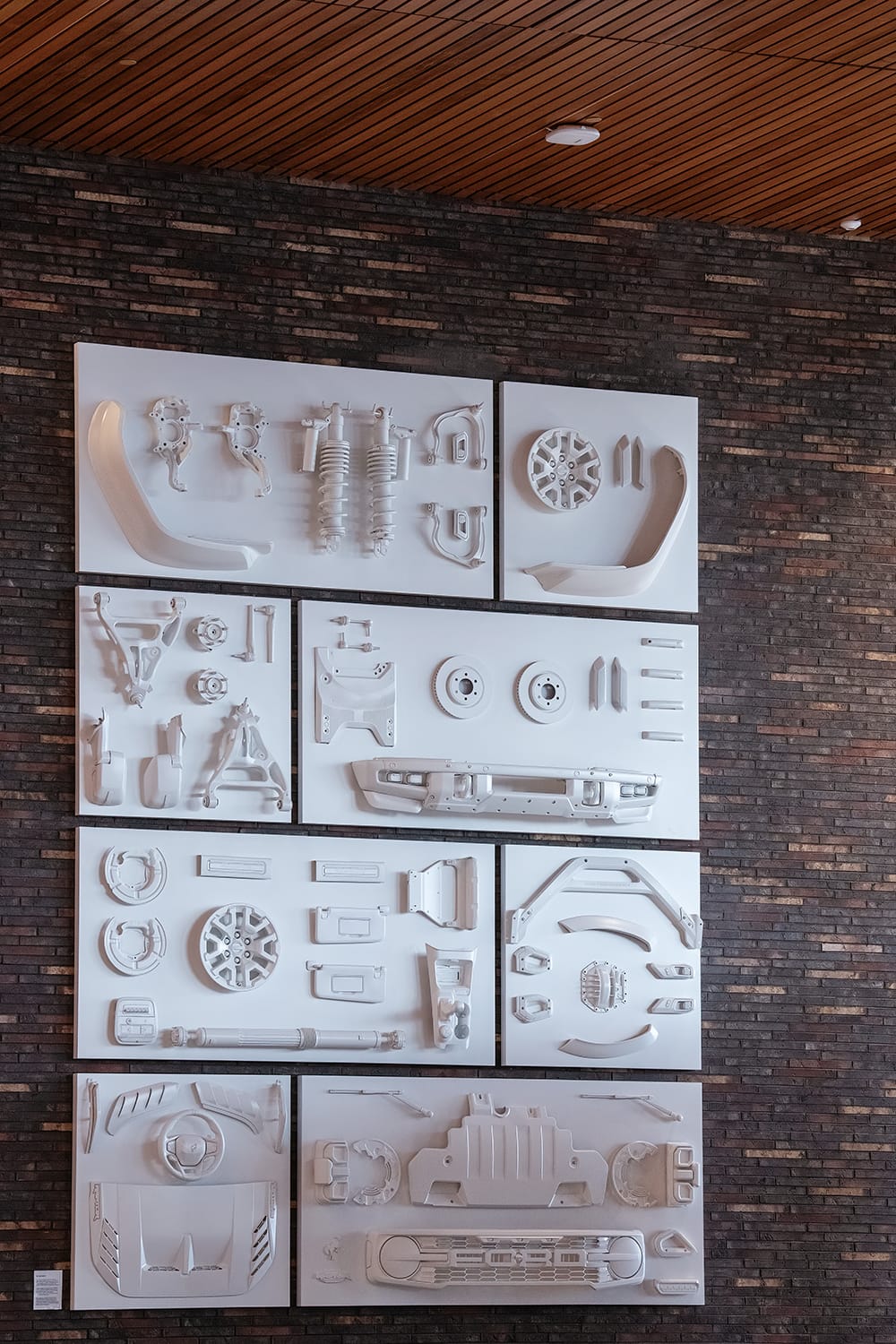
We arrived at the employee entrance, and the first things I noticed were the textures and the art that’s tastefully woven into the building’s design.

The ways they worked the Ford brand into these elements was clear without being cloyingly “on the nose.”
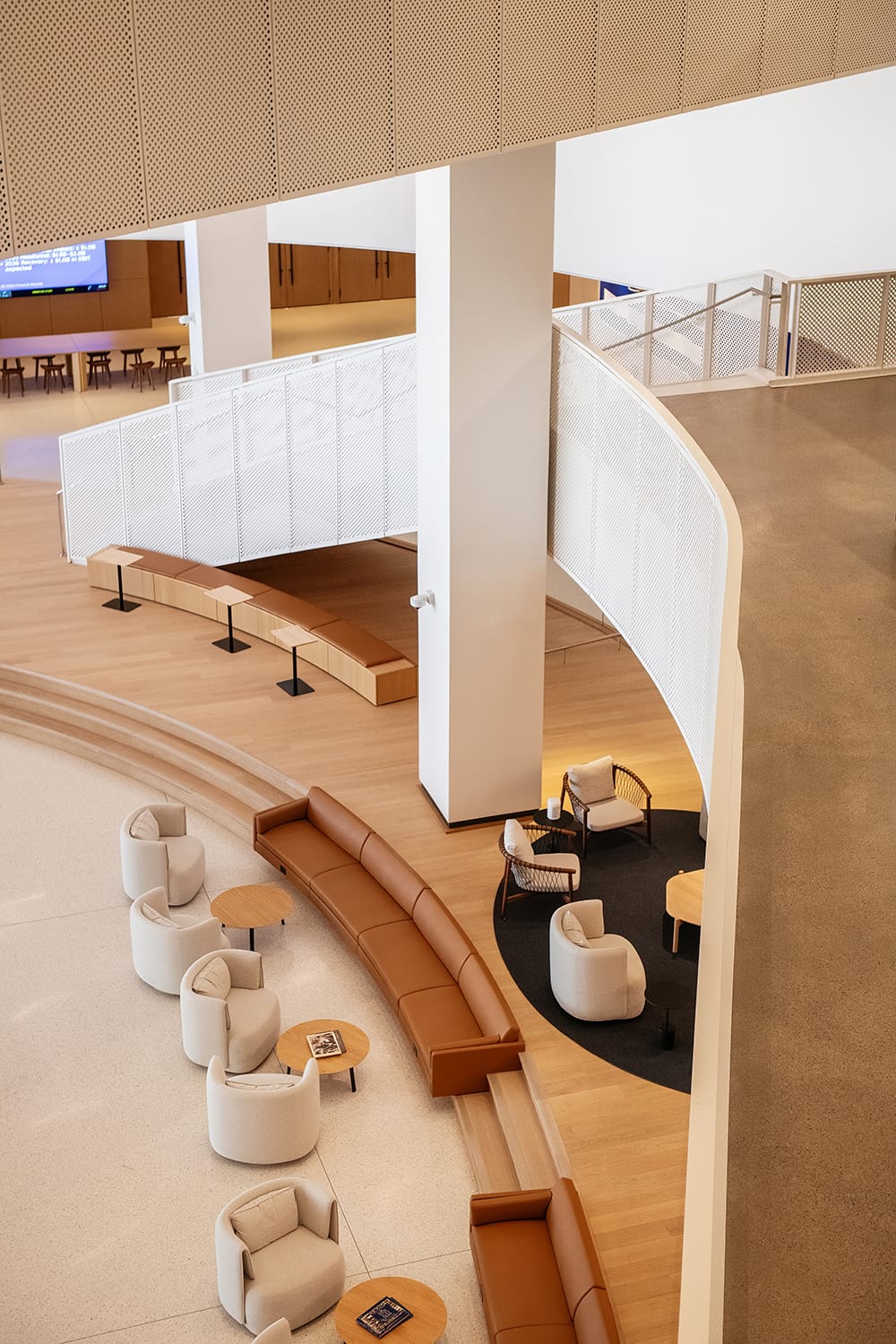
Biophilic Design: Bringing Nature Inside
Of course there are elevators available, but connecting the floors throughout is a series of staircases to areas that encourage collaboration.
The idea is to make it easy for workers from different teams to work together. That comes out in a number of creative ways.
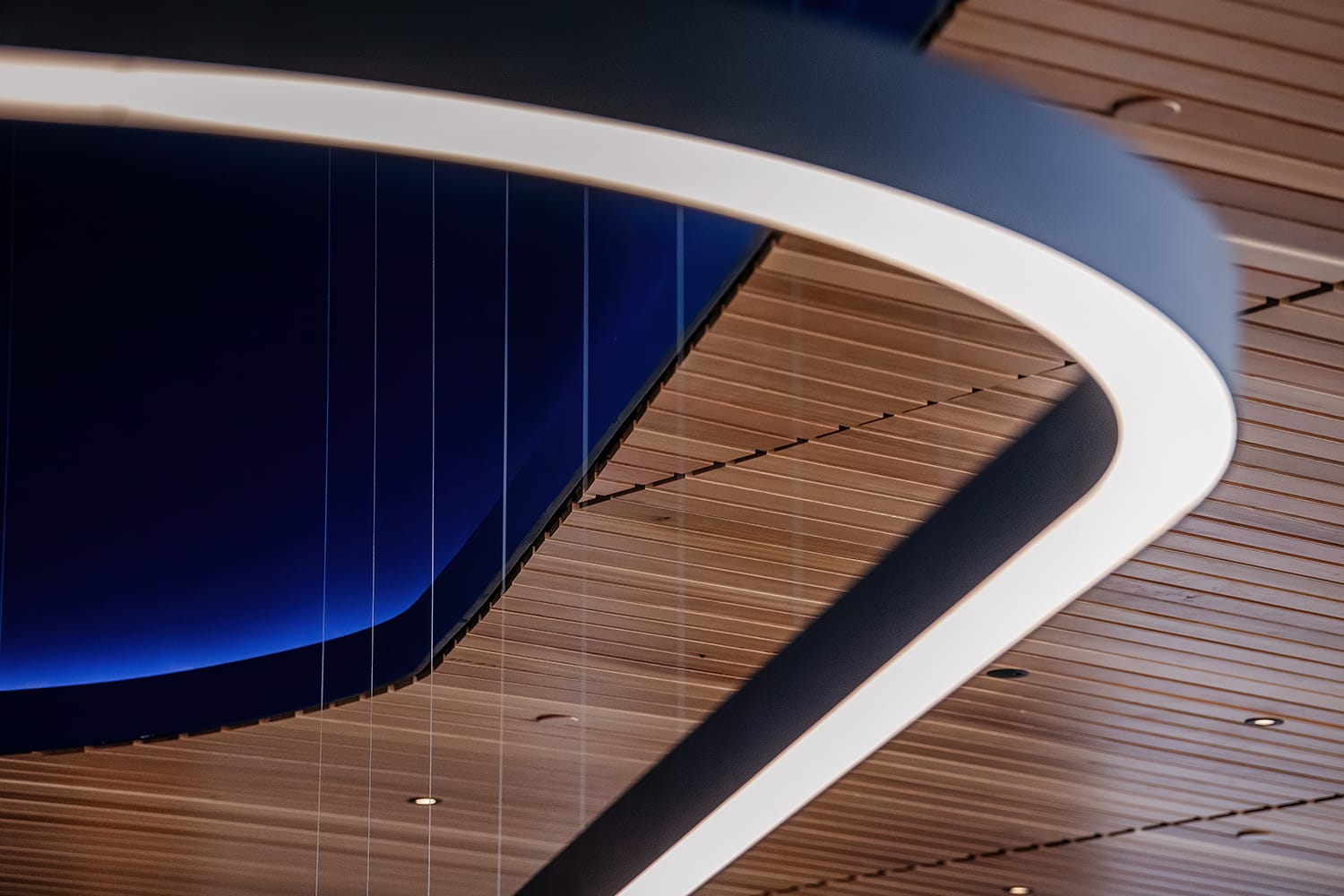
There are a series of meeting areas scattered throughout the footprint.

The building is inspired by “biophilic design,” which is the practice of incorporating natural elements, patterns, and materials throughout.
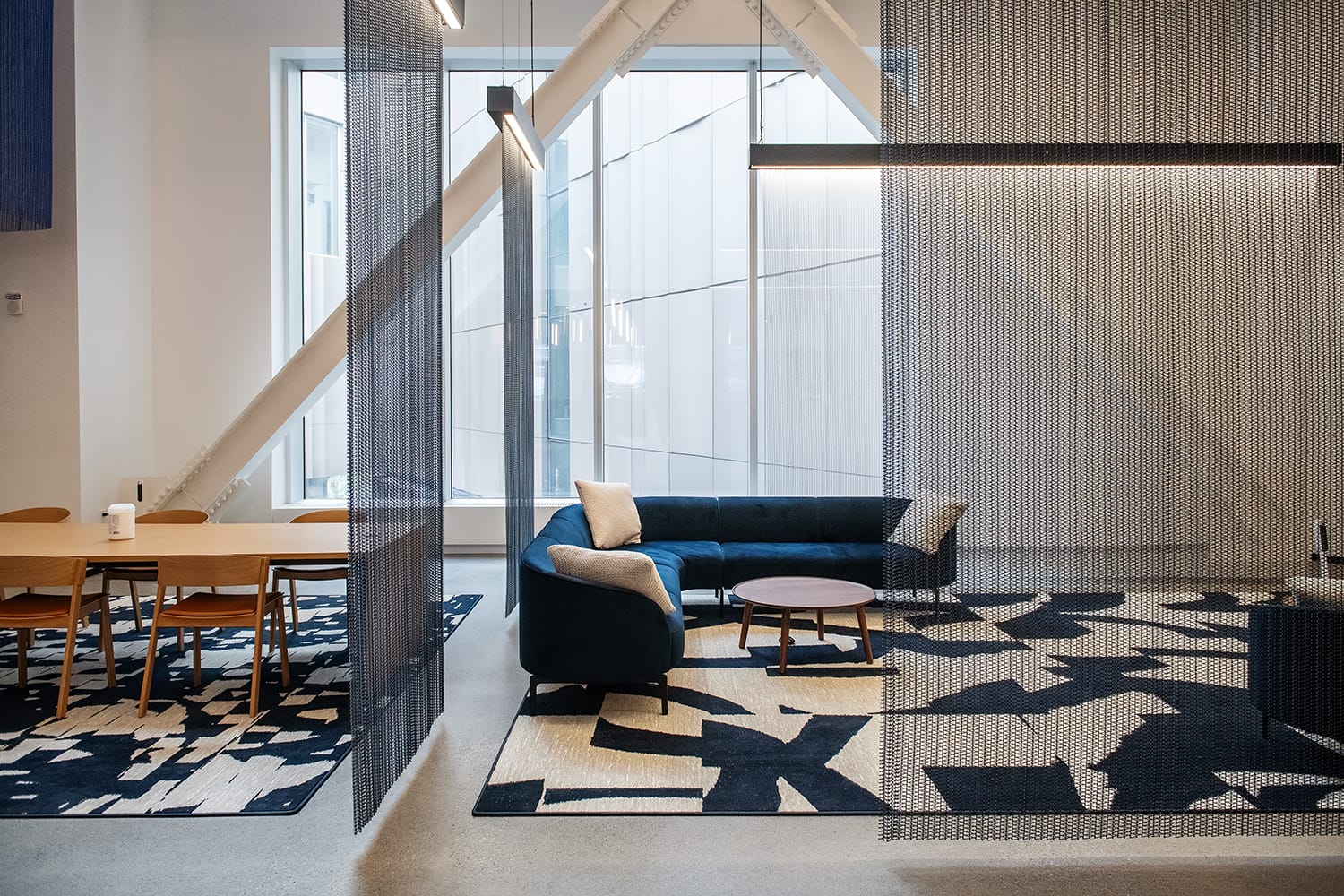
So much of this facility received daylight, and that’s perfect for working on something — cars and trucks — that will most be observed outside.
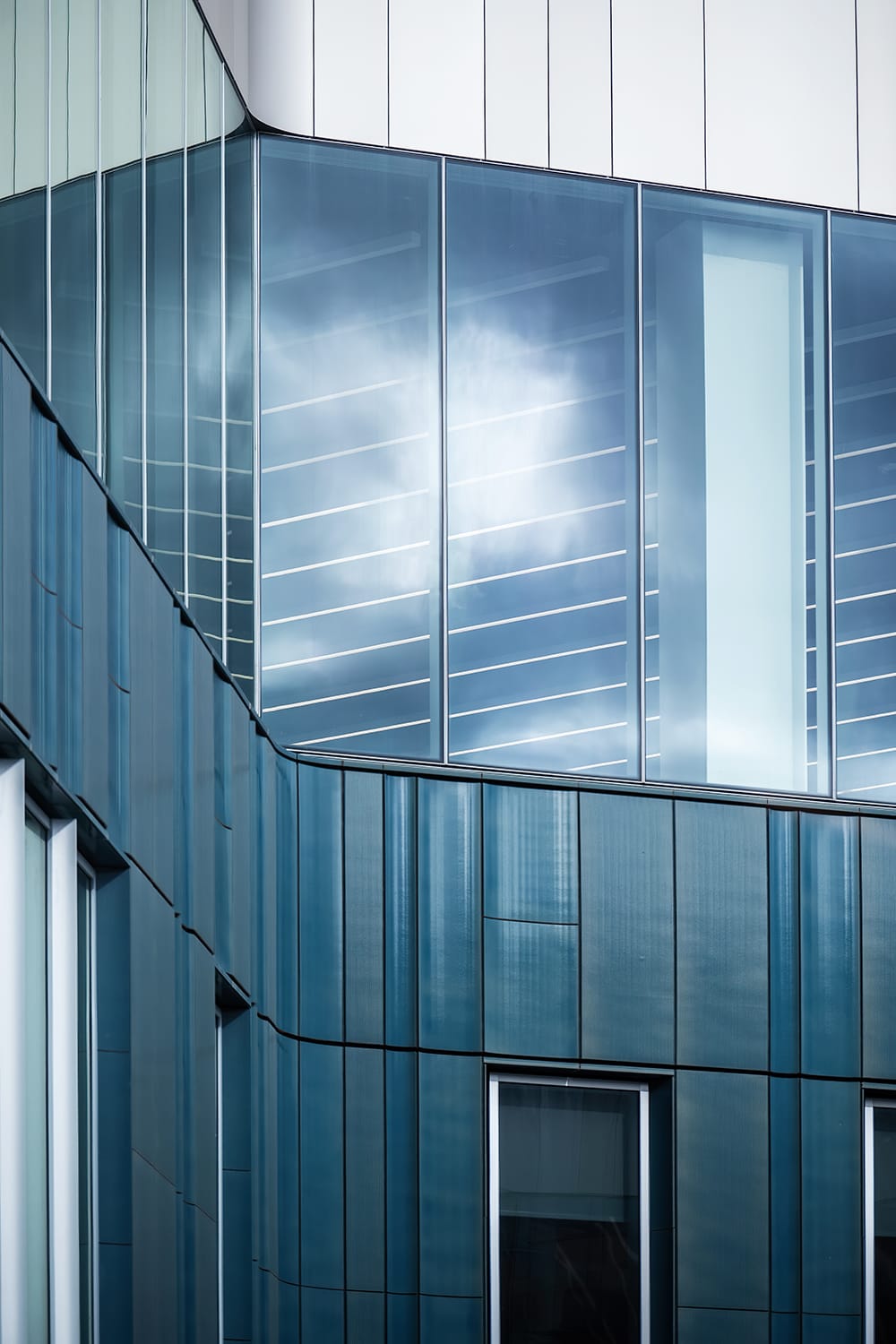
Here’s one way I noticed it. So often in modern design, you see some awful cheap panels slapped on the side of something and it’s called done.
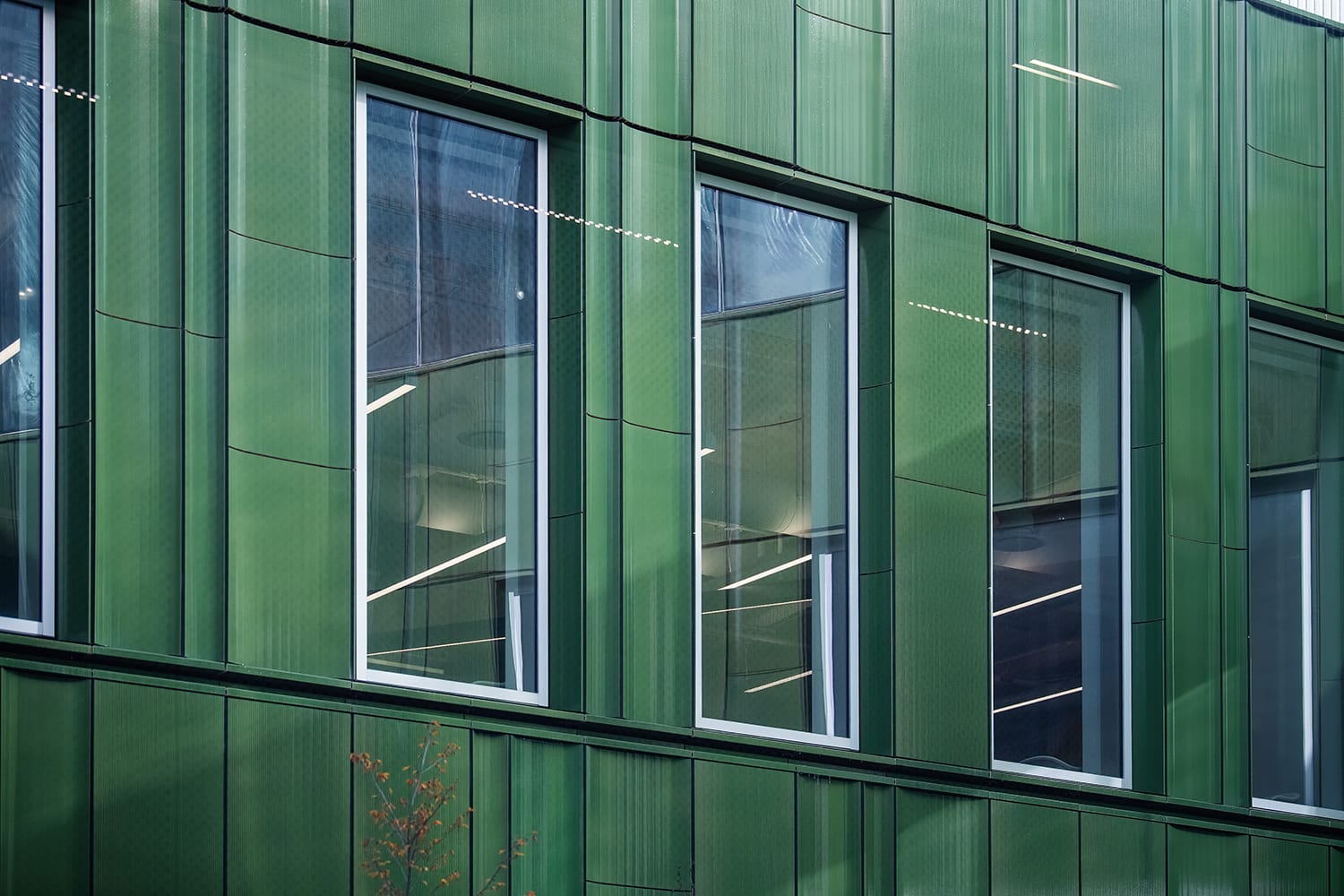
For those elements here, they use terracotta of different colors. Similar to many of the historic buildings in Detroit — and could be interpreted as a nod to working with clay, as they still do in the design department to perfect the designs of new vehicles.
The building has turntables throughout, so that vehicles can just be driven through and rotated to see how they fit in various environments.

Design and Fabrication: From Concept to Reality
It used to be that new designs would have to be camouflaged and driven around on the public streets, since the workers involved in different stages of development were located in different places. Now, the fresh looks can go from floor to floor, department to department, in minutes.
We couldn’t take pictures in the design and fabrication areas. But they blended old and new; with state of the art tech for some tasks; and century-old equipment and drafting tables that were refurbished by the team themselves, for others.
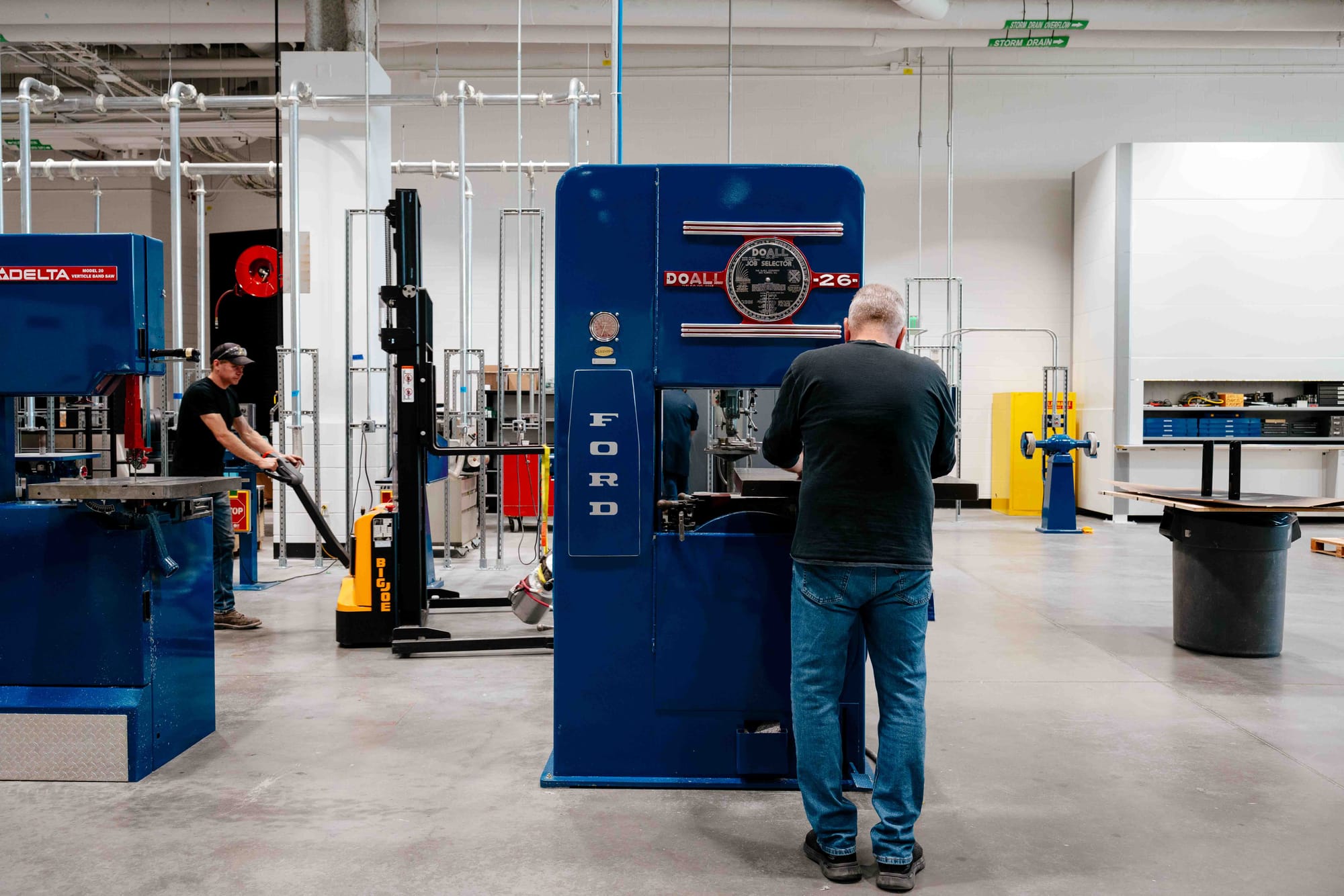
There’s a special film on the glass that blocks prying eyes from what they’re doing.
Not only does it add texture to the exterior, but there are little Ford ovals and historic patent numbers thrown in.
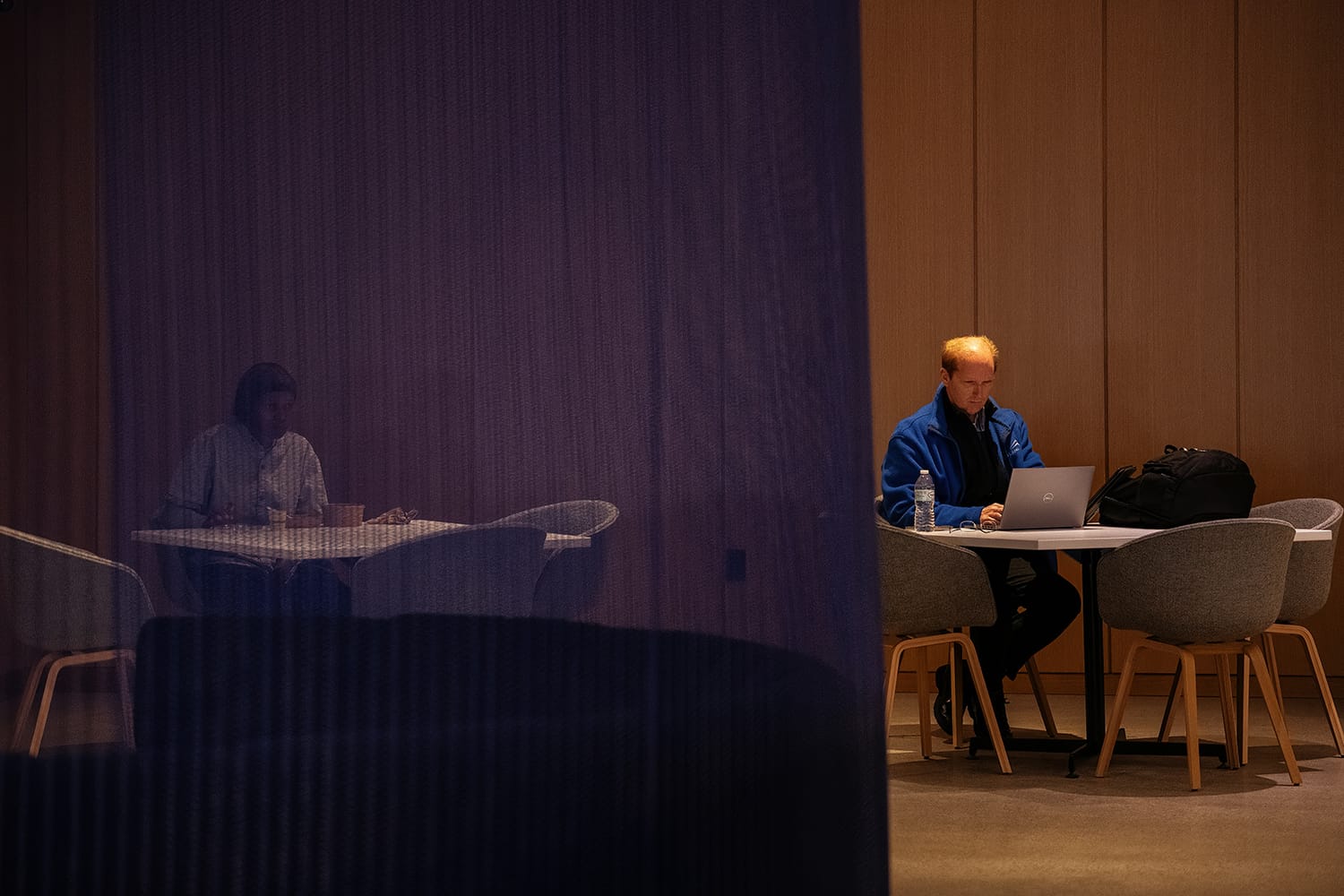
Another thing Ford did was create their own furniture sets, from rug designs to seating. They’re used throughout the company properties.
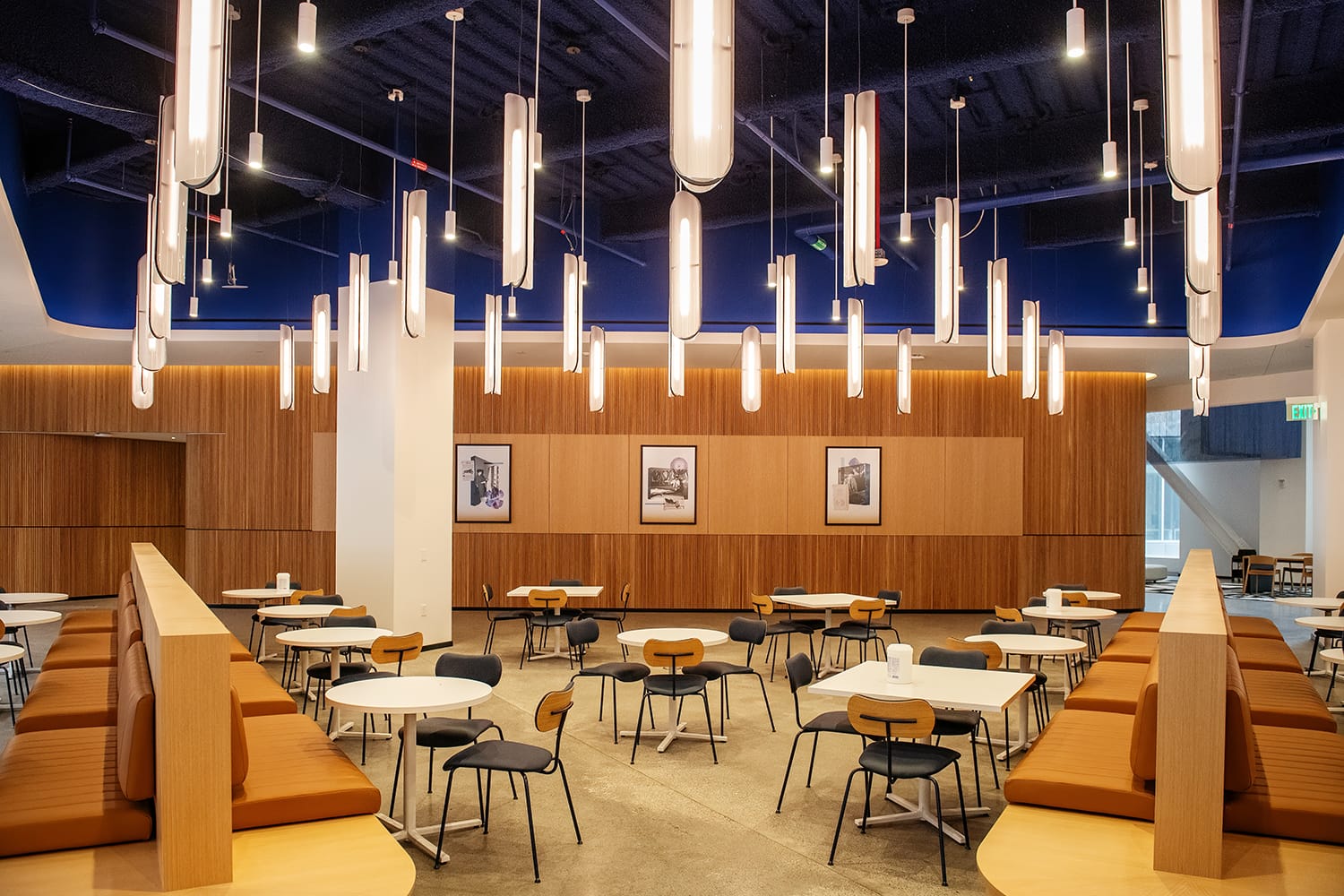
Gallery Hall: More Than a Cafeteria
Then there's the dining experience.
The Gallery Hall spans 160,000 square feet of dining that photographer Ryan on the podcast said reminded him of an airport he visited in Dubai.
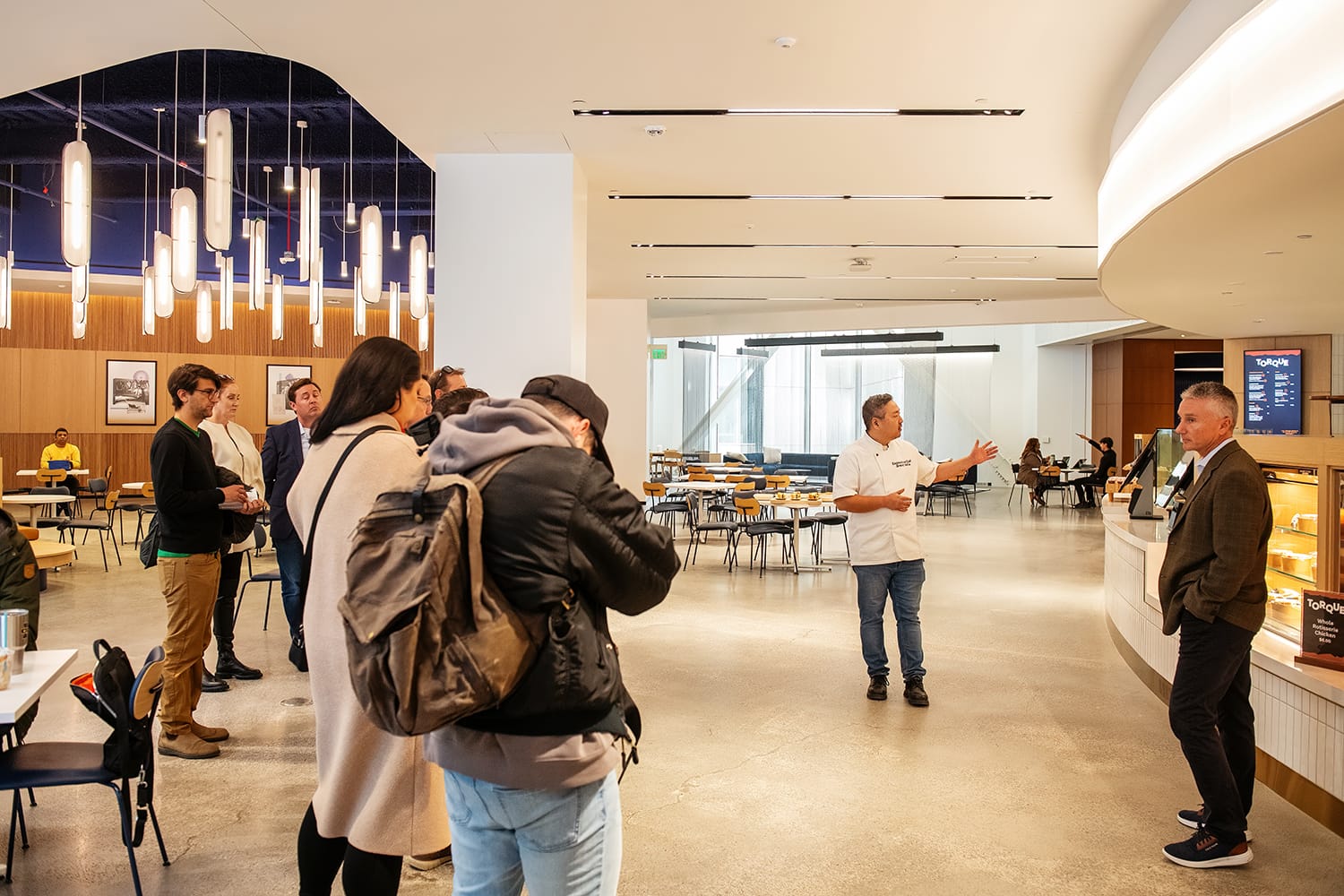
Executive Chef Grant Vella oversees seven kitchens to serve thousands of people every day.
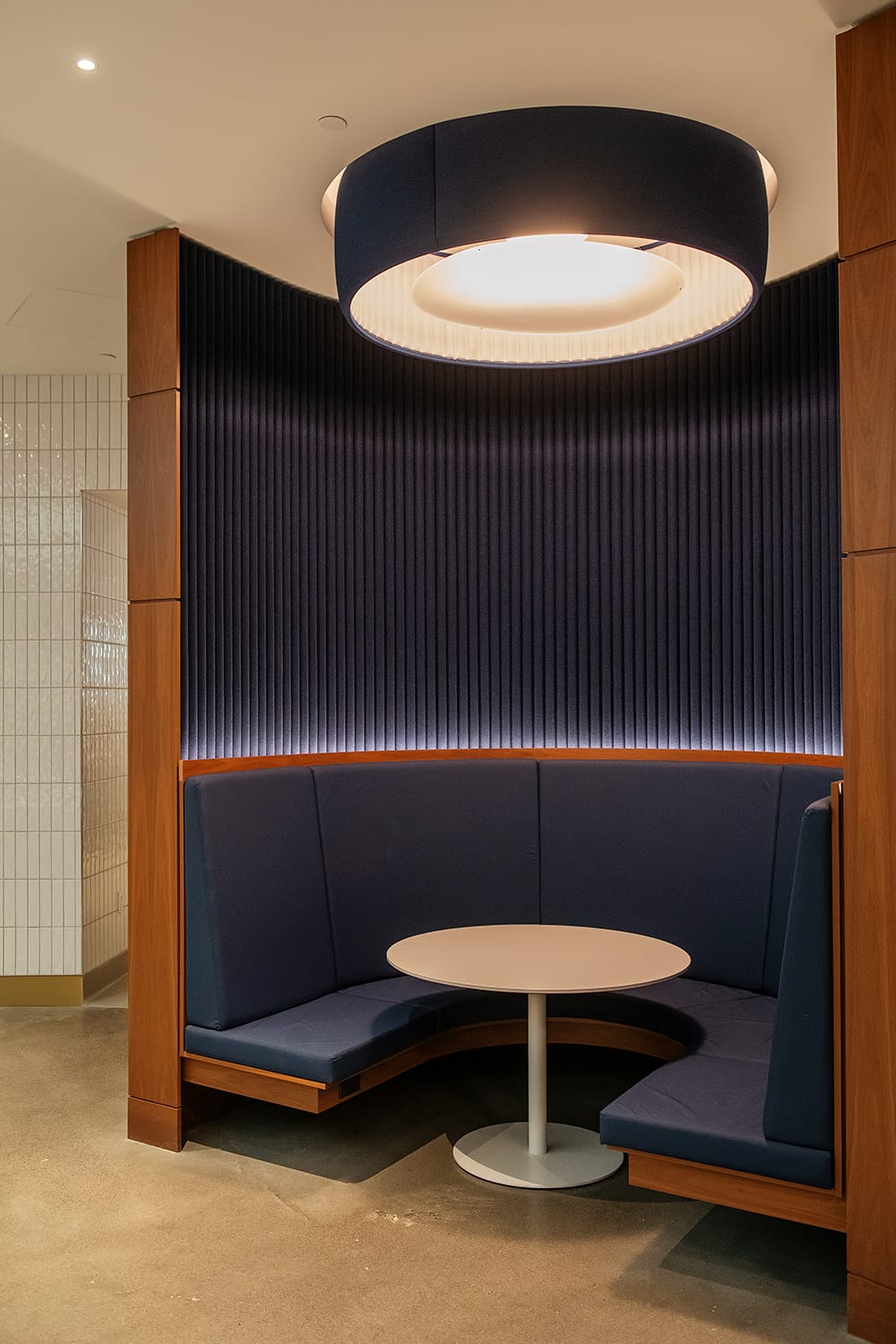
Not only do employees in the building have access — but so do other workers on campus.
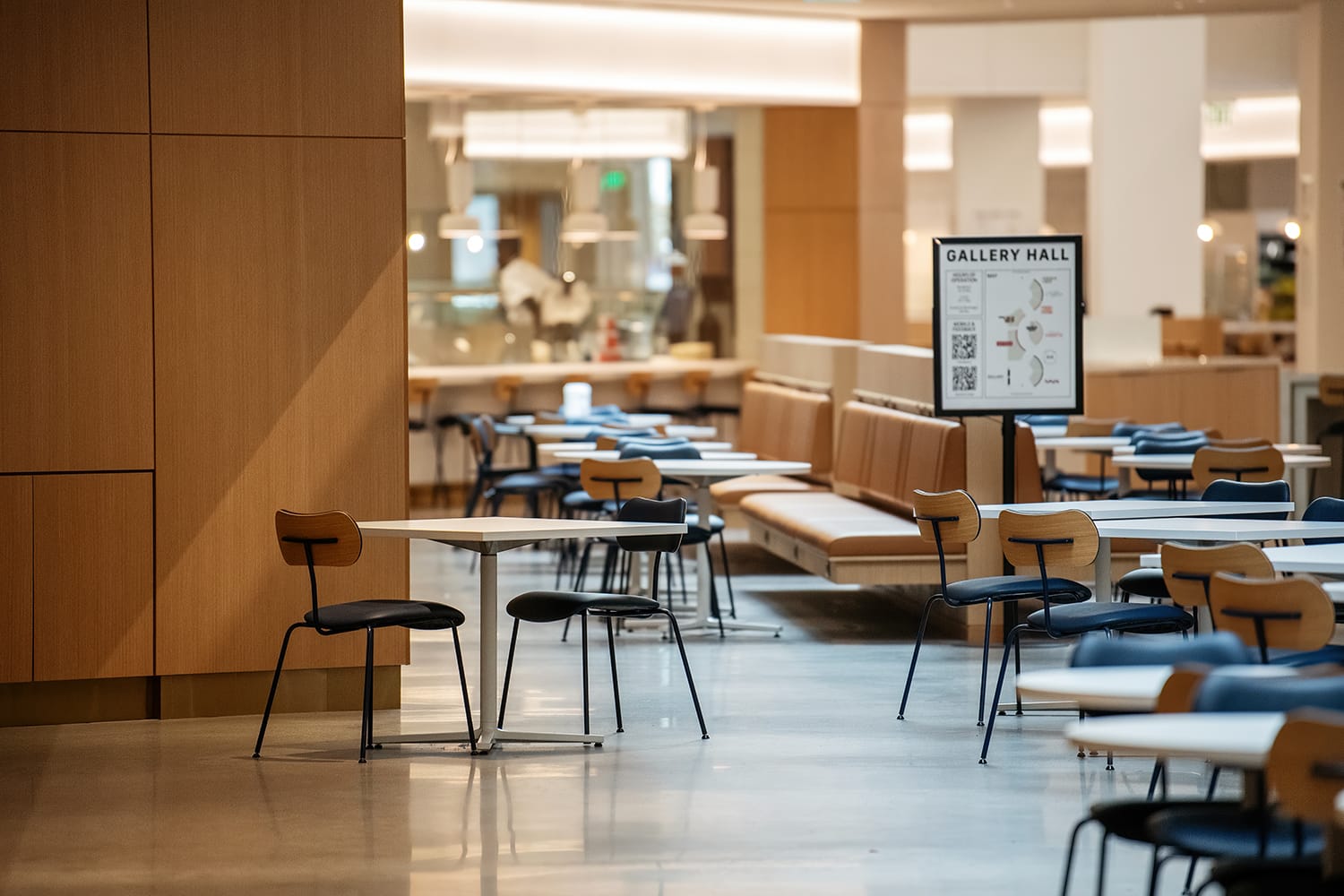
Obviously not a representative sample, but what we tasted was excellent. The favorite for many? $6 rotisserie chickens that people often take home.
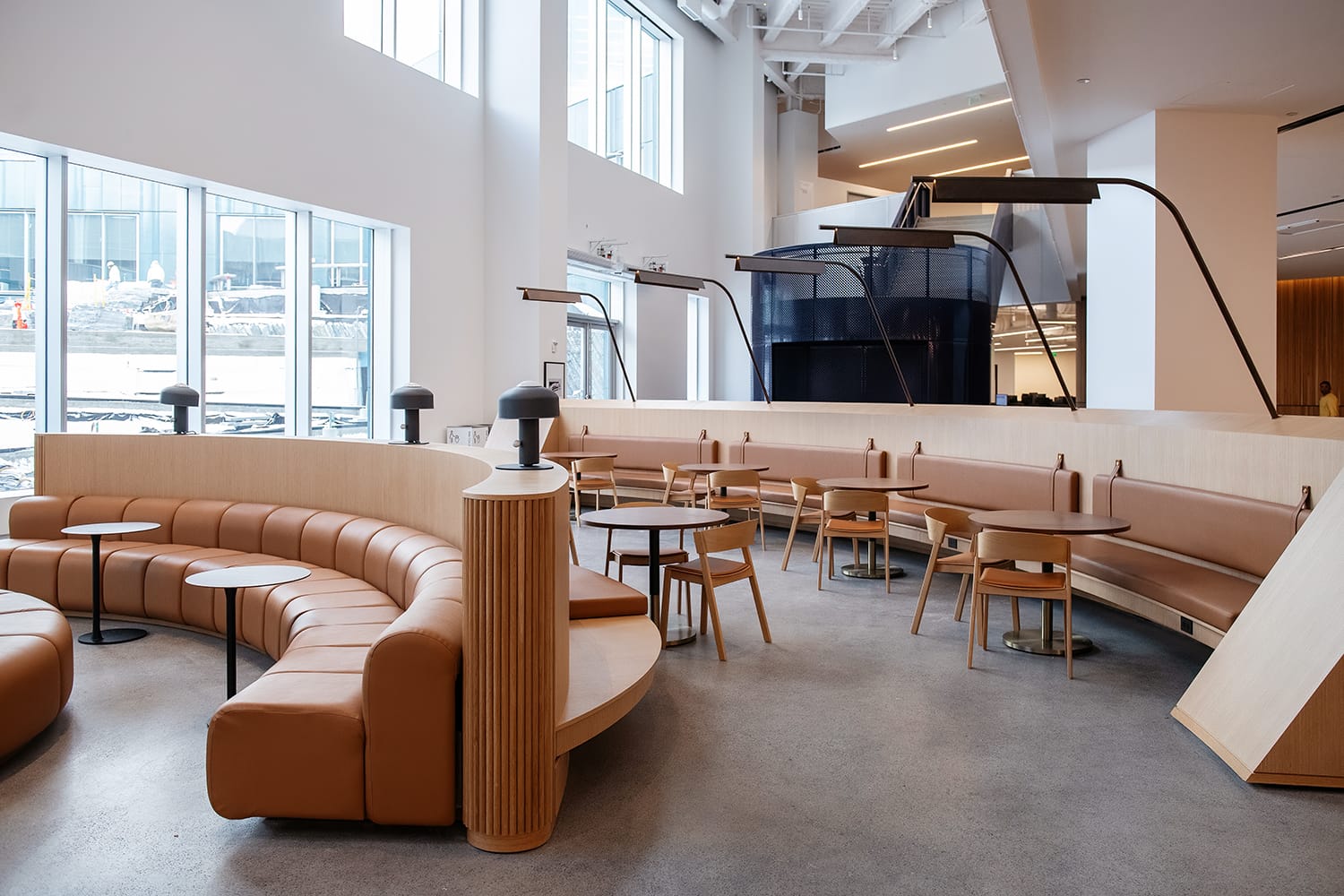
Vella is a Culinary Institute of America graduate who has a long track record and previously worked at Mad Nice in Detroit’s Midtown before coming on board with Ford more than two years ago.
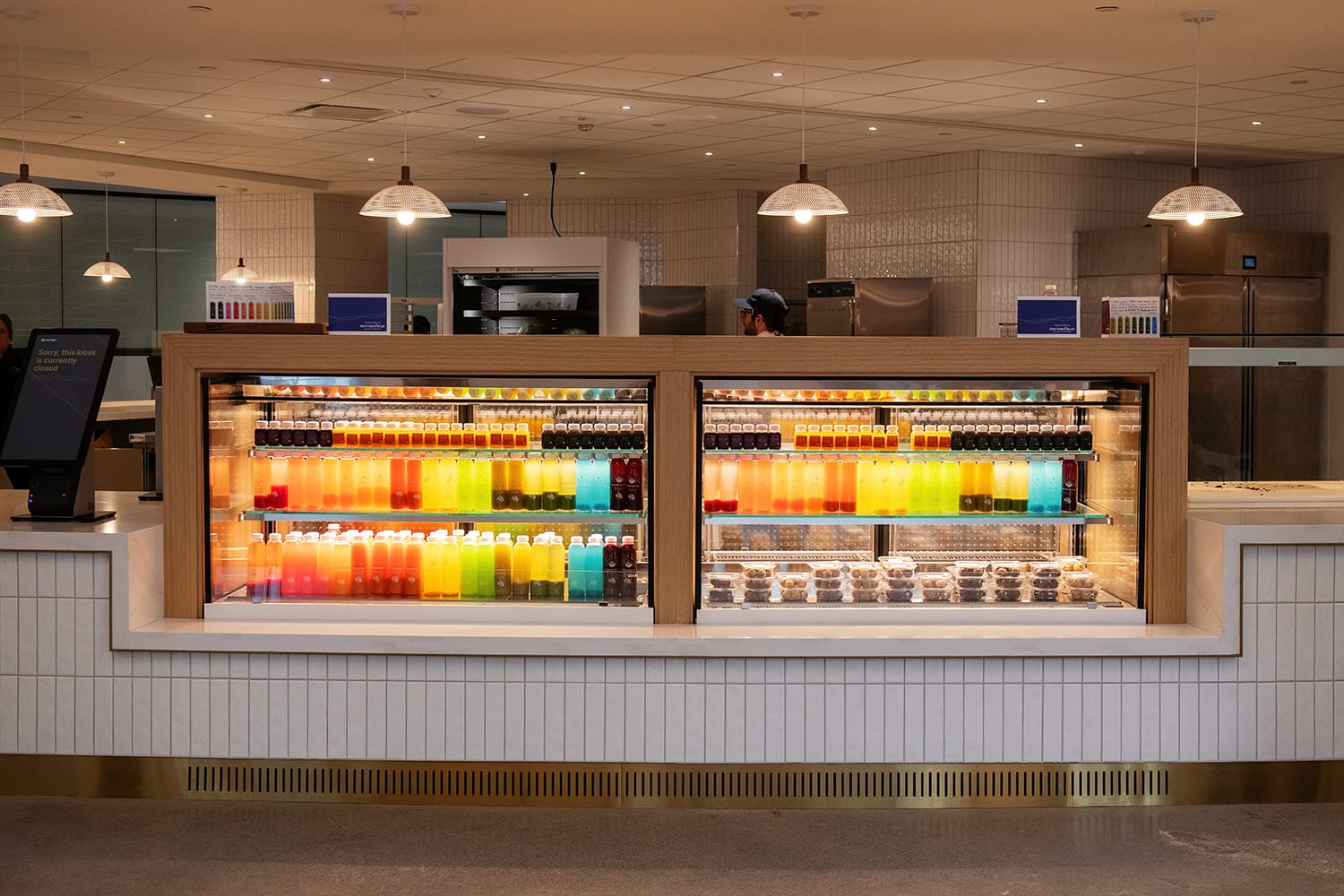
There are also Michigan-based options. James Oliver Coffee, Zingerman’s baked goods, and Momento Gelato is on offer.
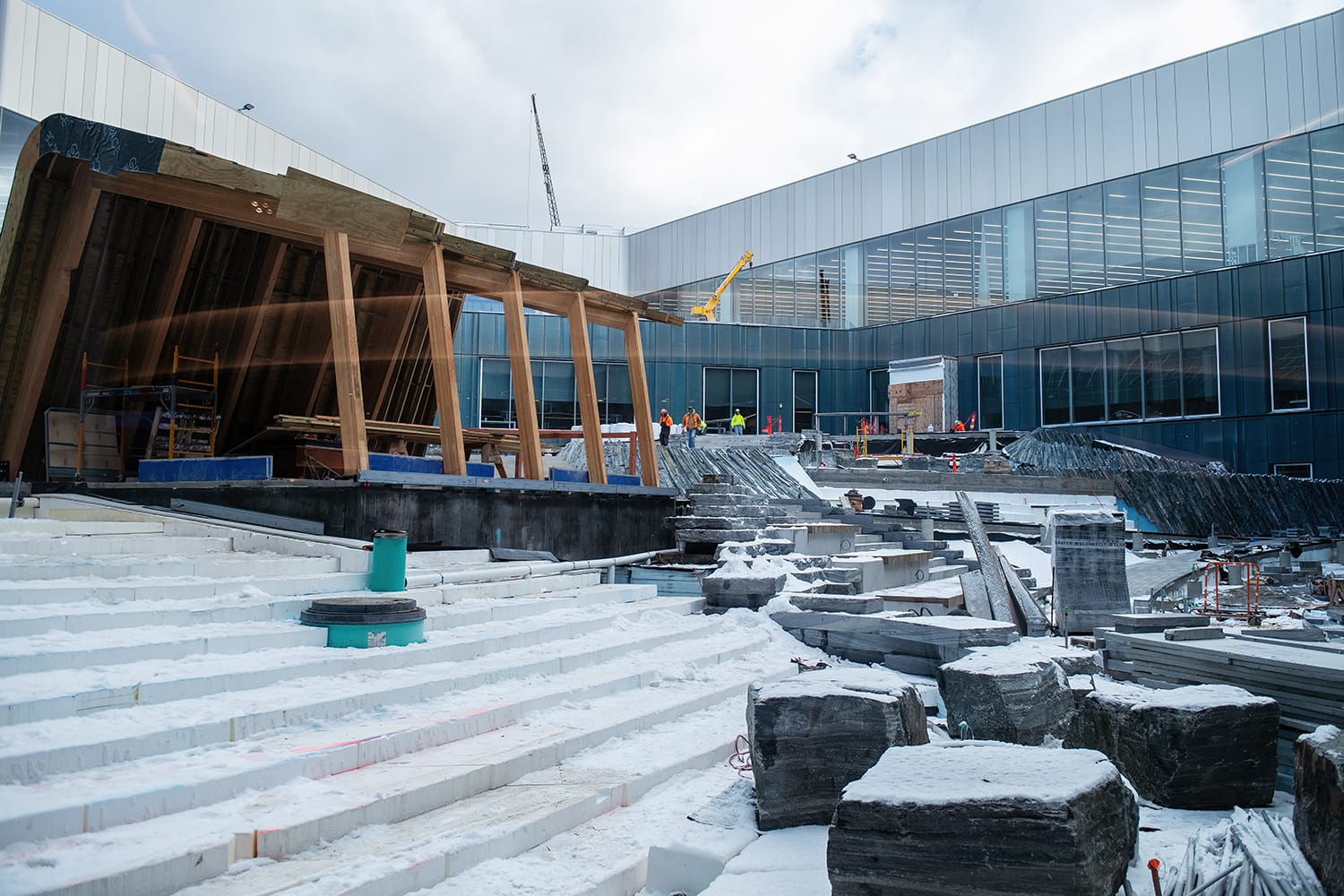
Looking outside the windowed expanse is a scene out of the Great Lakes.

An outdoor area with a couple of conference rooms that are inspired by the tents of the “Four Vagabonds” — Henry Ford, Thomas Edison, Harvey Firestone, and John Burroughs — who would often take camping trips together and work together on business projects.
As you can see, there are parts of this new HQ that are still getting their finishing touches while workers start to use it.
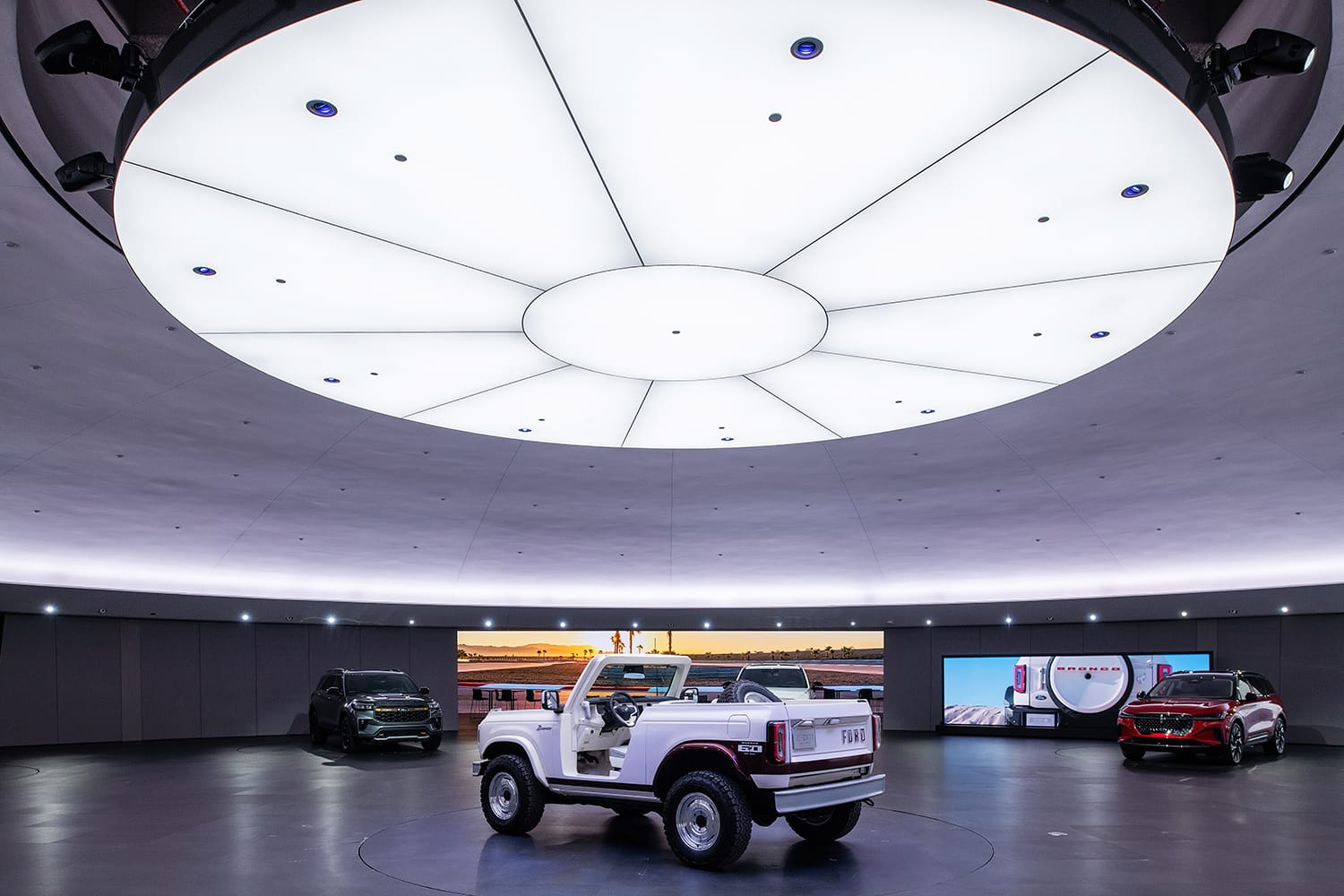
The Showroom: Where Vision Meets Reality
The last major stop showcases Ford's future.
It links multiple previously scattered functions into one space that can either be joined or divided into a few moments.
The first thing that catches your eye is the giant light fixture in the center. Imagine a Star Trek transporter room designed for cars instead of crew.

The fixture allows for the simulation of light at any hour of the day or night.

There are ten turntables, a digital screen that spans 64 feet across, a conference room that can be made private at the flip of a switch with frosted glass, a courtyard outside to look at vehicles in the actual outdoor light, and it’s all connected to the colors and materials display area.

There was one last surprise as we headed out of the building onto Oakwood.
Looking up, the building textures became clear. Again, this building balanced both being attractive from the street; but also, a treat if you’re walking near it.
It wasn’t just the glass that had angles, but the brick interplayed with the rest of the structure.
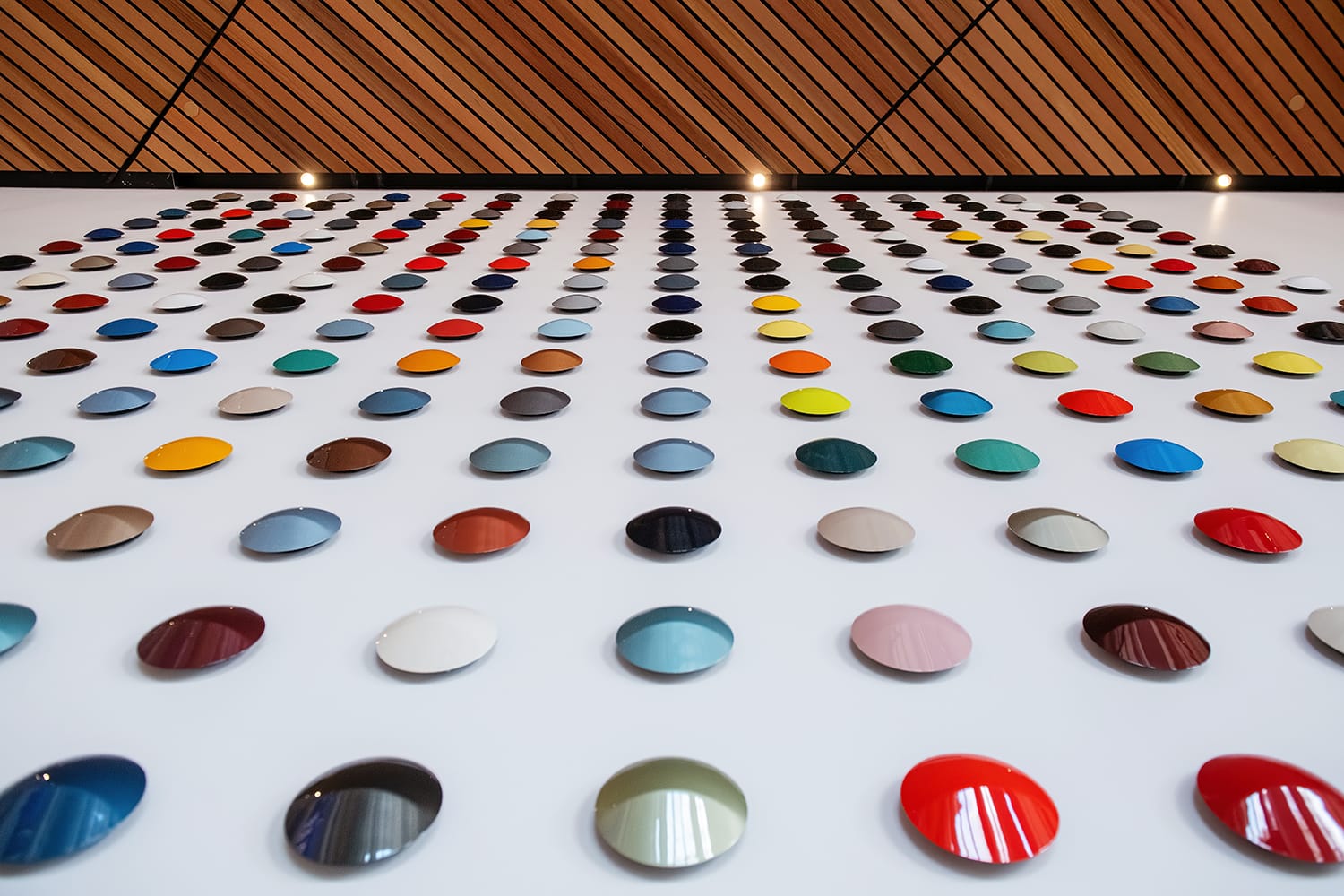
Doing, Not Talking
This newsletter — and many others — have spilled barrels of digital ink about Michigan’s competitiveness. How to make it so our state keeps up what’s happening in the rest of the world and country.
Truth is, governments can only do so much — and they move slowly.
What it’s also going to take is projects like this to turn the tide and show that Michigan-based companies are willing to spend the dollars to make the places that top talent actually wants to work in.

To bust down antiquated walls and push forward. To implement modern amenities and tastes, and not shove workers into cubicle farms like gophers who happen to have a 401k.

Although Metro Detroit is still the crucible of the auto industry, our position is no longer assured. California and other states have been coming up fast. And we need to think beyond autos, to how all these industries can branch and build off each other.
We can’t let grit-covered nostalgia glasses blind us to the realities of 2025. This campus is a firm step in the right direction. For Ford, for Metro Detroit, and for Michigan.
A Moment of Gratitude
Our Daily Detroit community has stepped up in a HUGE way for our hungry neighbors! We’ve blown by our Gleaners fundraising goal, now providing more than 4,200 meals this holiday season. If you want to join in, we’re keeping the gates open to giving.
We don’t touch any of these dollars, follow this link straight to Gleaners.
Support Our Work!
We’re funded in large part by people like you, our members on Patreon. Local media needs local support to survive and thrive!
If you join us, you’ll not only get your choice of swag (including our sticker pack) — but early access to a conversation between myself and photographer Ryan Southen about our Ford trip AND bonus photos that didn’t make it to the newsletter.
And that’s it for today. If this is your first time here, don’t forget to sign up for future email newsletters, free.
Thanks again to Ryan Southen for his visual work on this note. You can follow him on Instagram or visit his website.
Until next time... Remember that you are somebody,
-Jer

